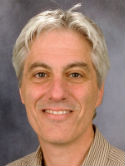High-dose chemotherapy with autologous marrow rescue for malignant brain tumors: Analysis of the impact of prior chemotherapy and cranio-spinal irradiation on hematopoietic recovery Journal Article
| Authors: | Faulkner, L. B.; Lindsley, K. L.; Kher, U.; Heller, G.; Black, P.; Finlay, J. L. |
| Article Title: | High-dose chemotherapy with autologous marrow rescue for malignant brain tumors: Analysis of the impact of prior chemotherapy and cranio-spinal irradiation on hematopoietic recovery |
| Abstract: | The relative impact of age, sex, nucleated cell dose, prior chemotherapy, prior cranio-spinal irradiation (CSI) and bone marrow harvest (BMH) site on hematological recovery after ABMT were analyzed in a multivariate model. The study population comprised 100 patients with a median age of 9 years who underwent ABMT for malignant brain tumors. Two engraftment parameters were evaluated: number of days post ABMT before (1) an absolute neutrophil count (ANC) ≥ 0.5 x 109/l and (2) a platelet count ≥ 50 x 109/l were achieved for the third consecutive day without transfusions. Increasing cell dose correlated significantly with a more prompt recovery of platelet counts and ANC. Previous chemotherapy significantly delayed both neutrophil and platelet engraftment. The group of patients who also received CSI had a very delayed platelet recovery with a median time to engraftment of 72 days. Neutrophil engraftment was also significantly delayed and occurred at a median of 23 days. This effect of CSI was independent of cell dose or prior chemotherapy. In 20 of these patients, marrow was harvested at least partially from the posterior iliac crests, which might have received significant doses of irradiation. We conclude that engraftment is significantly faster if bone marrow is harvested prior to any chemotherapy administration, and that patients who receive prior CSI may have significant engraftment delay, particularly of the platelet lineage. In this latter group of patients, marrow should not be harvested from the posterior iliac crests. Strategies that might enhance both neutrophil and platelet count recovery should be considered in patients with irradiation damage to a substantial proportion of the total hematopoietic tissue. |
| Keywords: | adolescent; adult; child; human tissue; child, preschool; human cell; major clinical study; antineoplastic agents; radiation dose; combined modality therapy; chemotherapy; brain tumor; brain neoplasms; carboplatin; etoposide; granulocyte macrophage colony stimulating factor; dose-response relationship, drug; radiation injury; carmustine; thiotepa; cranial irradiation; age; neutrophil; infant; spinal cord; thrombocyte count; hematopoiesis; multivariate analysis; leukocyte count; gender; bone marrow transplantation; granulocyte colony stimulating factor; transplantation, autologous; platelet count; brain tumors; thrombocyte function; autologous bone marrow transplantation; iliac crest; humans; human; male; female; priority journal; article; marrow rescue |
| Journal Title: | Bone Marrow Transplantation |
| Volume: | 17 |
| Issue: | 3 |
| ISSN: | 0268-3369 |
| Publisher: | Nature Publishing Group |
| Date Published: | 1996-03-01 |
| Start Page: | 389 |
| End Page: | 394 |
| Language: | English |
| PUBMED: | 8704692 |
| PROVIDER: | scopus |
| DOI/URL: | |
| Notes: | Article -- Export Date: 22 November 2017 -- Source: Scopus |
Citation Impact
Related MSK Work





